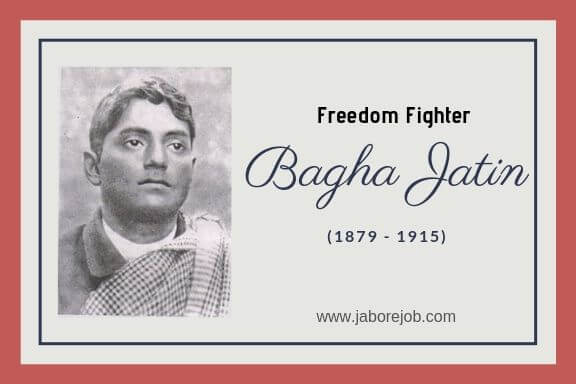India is the land of diversity as we all know, not only people even land also diversified in the north, east, west and south with land and marine borders, so today let us learn all-important International Boundaries of India and its disputes
International Boundaries of India
India shares 15,200 long land frontier with
a) Pakistan (West and North West) – 3,310 km.
Indian states that share a border with Pakistan: Gujarat, Rajasthan, Punjab and J & K (approximately 22% of the total land border of India)
b) Afghanistan (North West) – 80 km.
The shortest land border with India: Jammu & Kashmir (PoK) shares a border with Afghanistan (it represents only 0.52% of the total land border of India)
c) China (North) – 3,917 km.
A very important length of sharing the border with 5 Indian states with China: J & K, Himachal Pradesh, Uttarakhand, Sikkim, Arunachal Pradesh (approximately 26% of the total land border of India)
d) Nepal (North) – 1,752 km.
Indian states that share the border with Nepal: Uttarakhand, Uttar Pradesh, Bihar, West Bengal, and Sikkim
e) Bhutan (North) – 587 km.
The Indian states that share the border with Bhutan: West Bengal, Sikkim, Arunachal Pradesh, and Assam.
f) Bangladesh (East) – 4,096 km.
The Indian states that share the border with Bangladesh: West Bengal, Assam, Tripura, Mizoram, and Meghalaya (approximately 27% of the total land border of India)…
g) Myanmar (East) – 1,458 km.
Indian states that share the border with Myanmar: Mizoram, Manipur, Nagaland and Arunachal Pradesh.
India shares totally 15,200 km long land frontier, India’s longest border is with Bangladesh, while the shortest border is with Afghanistan.
1) Indo-China Border and its Disputes
India shares 3,917 km border with China, which is the second-largest border of India and accounts for over 1/4th of its total border.
Five Indian states Jammu and Kashmir, Himachal Pradesh, Uttaranchal, Sikkim, and Arunachal Pradesh touch the border of China.
This border is the product of Manchu policy, Chinese Republican policy, and British policy.
Since it was difficult to demarcate this border precisely due to the rugged terrain of the region, it was inaccurately delimited between British India and Independent Tibet. China never accepted this border nut ignored during British rule in India.
Since India’s Independence on 15th August and the communist takeover of China on 1st October 1949, goodwill gesture developed between 2 countries and in 1954 a general agreement containing principle “Panchsheel” was announced.
The Five Principles in Panchsheel were
1) Mutual respect for each other territorial integrity and sovereignty.
2) Mutual Non-Aggression.
3) Mutual Non-Interference in each other internal affairs.
4) Equality and Mutual Benefit.
5) Peaceful co-existence.
In the same year, India reorganized Chinese sovereignty over Tibet and it was brought under the direct control of China.
Thus, the buffer character of Tibet between India and China ceased to exist and Razor-thin Boundary became operative.
Sino-Indian boundary disputes can be broadly categorized into 3 sectors normally:
a) Western Sector
A long border of 2,152 km separates Jammu and Kashmir from the sinking Chinese province. The border between Sinkiang and POK is about 480 km and the rest is between Tibet and Ladakh.
To the north, the border follows the chains of Mustagh Ata, Aghil, Karakoram, Qara Tagh and Kunlun, while to the south, they extend from the Karakoram basin, separating the streams that flow into the basins from the Indus and Tarim, and continue to the Kailash range.
Here, the border is between India’s Indus system and China’s Khotan system.
The boundary of the western sector is the result of British policy towards Jammu and Kashmir. These borders were defined by the Treaties of 1665 and 1686 (known as the Ladakh-Tibet Agreement) and were respected by the 1842 agreement between Kashmir, Tibet, and China.
However, the borders have never been determined precisely due to the rugged terrain that leads to several border disputes between India and China.
The Chinese claim is based mainly on ethnic grounds and the claim that the Wastelands of Aksai Chin are just an extension of Tibet and Sinkiang in terms of language, religion, and culture.
Meanwhile, the Indians claim that this region is historically administered by the state of J & K since 1849 and that the Indo-Tibetan treaties of 1665, 1684 and 1842 have confirmed the border between Tibet and Ladakh.
China claims the Aksai Chin district, the Changmo valley, Pangong Tso, the Sponggar Tso region in the northeast of Ladakh, and a strip of about 5,000 km throughout the entire east of Ladakh. China also claims a Gilgit from the Hunza area in northern Kashmir.
Since 1954, China has repeatedly violated the international borders between India and China, causing every time a change in the LOAC.
In 1959, with new aggression and a large-scale war in 1962, China currently has some 54,000 square kilometers of Indian territory, of which 37,555 are located only in Ladakh.
b) Middle Sector
Along the 625 km long Ladakh-Nepal basin, it touches two Indian states, Himachal Pradesh and Uttarakhand.
The Himachal Pradesh border follows the waters that separate from the Spiti and Para Chu rivers and continues along the basin between the east and west tributaries of Sutlej.
The border of Uttaranchal is delimited by watersheds between Sutlej, on the one hand, and Kali, Alakananda, and Bhagirathi, on the other. This border crosses Sutlej near Shipki La and therefore, crosses the passes of the Mana, Niti, Kungri-Bingri, Dharma and Lipu Lekh watersheds.
Finally, it joined the trijunction of China, India, and Nepal. This border is approved by the Tibetan and British governments under the Treaties of 1809 and 1919. The Chinese claim 2,000 km in the Nilang-Jadang area.
c) Eastern Sector
1140 km of border between India and China, from the eastern end of Bhutan to a point near the Talu Pass, at the crossroads of India, China, and Myanmar.
This line is called the line of Mc Mohan after Henry Mc Mohan, a British representative who signed the Convention of Shimla (1913-1914).
The line crosses the Himalayas between Bhutan and Myanmar.
India claims the Mc Mohan Line as an international border, as agreed by the Indo-Tibetan Agreement in the Shimla Convention.
In addition, the Chinese reject the validity of the Mc Mohan line on the basis of the non-autonomy of Tibet and claim the whole of Arunachal Pradesh (88,000 sq km) to the south of this line to the foot of the Himalayas in the Brahmaputra Valley.
India is pressing upon 2 crucial points.
a) China has never questioned the validity of British India from 1914 or Independent India from 1947 over their control of territories till the Mc Mohan line.
b) Even in 1956, when Chinese attention was drawn into certain maps of China showing disputed areas within their territory, the Chinese Government promised to rectify cartographic errors.
Also read: Geographical Basis of Indian Federalism
2) Indo-Pak Border and its Disputes
Before 1947, India and Pakistan were part of a Union under the control of the British Raj. Later, the colonial powers separated the region on the basis of the religion that gave rise to two nations as India and Pakistan decided by Sir Cyril Radcliff who was the chairman of Border Commissions at British period.
The transition was filled with bloody incidents and, as a result, both nations developed mutual animosity.
The line draws from Great Rann of Kutch in Gujarat which passes through the desert of Rajasthan, fertile plains of Punjab, the hills & mountains of Jammu and Kashmir, till the Himalayan and Karakoram mountains range.
The border with Pakistan can be examined under the following 2 disputes
(i) The Rann of Kutch Dispute and
(ii) The Kashmir Dispute
i) The Rann of Kutch Dispute
The border was well defined as per the Radcliff division but the tension still remains because Pakistan advocated that it does not happen on democratic grounds, they say Rann was not a marsh but a land-locked sea and should be divided equally for both the countries.
India denied the claim because the Rann was a marsh and been a part of Kutch state which has been merged with India after Independence.
ii) The Kashmir Dispute
The main dispute is to have the command over Kashmir by India and Pakistan, both are not ready to give away the region.
The state of Jammu and Kashmir covers an area of approximately 222,236 km. The State shares a common boundary with China and Afghanistan.
There are mainly 6 prominent regions:
The First one is the Valley of Kashmir contains the Muslim majority, even though the Brahmins have the powers of social, economic and political from the ancient period.
The Second region lies in the southern part of Jammu and Kashmir, where Hindus are the major population.
The Third region is Ladakh or even called Tibet, the region contains Buddhism following people with their unique cultures.
The Fourth region is the Gilgit, which covers the northern part of the state where a large population is Muslims and the land contains a lot of mountains.
The Fifth region is Baltistan which lies in the northern part of the state-dominated with Muslims in the mountain region along with Indus River.
The Sixth region of the state is Punch lies in the north-west of Jammu and south-west of Kashmir valley containing Muslims dominated region and also has easy access to Pakistan. Chenab and Jhelum are the 2 major rivers over the region.
From all above these Pakistan claims it as a Muslim dominated state having the connectivity of roads and the rivers Ravi, Jhelum and Indus, Chenab flow from Jammu and Kashmir to Pakistan which is important for their agricultural practices.
India on the other side stresses the illegal support given by Pakistani’s for the Kashmir Government.
China’s aggression policy of the late 1950s, its occupation of Tibet, after that apart from Ladakh(1965) and also constructed roads through Aksai-Chin in Ladakh, these developments threatened India and created an urgency of adopting the strategic role in Kashmir.
On 26th October 1947, Maharaja Hari Singh signed the Instrument of accession, from then legally Kashmir became the part of the Indian Union but never accepted by Pakistan even today.
From 1947, there were many wars happened between India and Pakistan in the following years 1948, 1965, 1971 and 1999 (Kargil) for the same Kashmir issue. All the wars won by India but still, the issue did not settle down by both the countries, I think it is a never-ending situation…
- Siachen Glacier Dispute
It is located near the Karakoram and is 75 km long and 2 to 8 km wide. China and Pakistan have road connectivity near this glacier known as the Karakoram road. As a result, it plays an important role as a link to the economy for both countries.
The glacier is also located northwest of POK and above 5800 m of sea level.
The south-eastern part of the glacier is occupied by India, the troops use the Nubra valley route to reach Siachen glacier. Both the countries positioned on high alert in the border.
- Sir Creek
The boundary of the Gujarat state in India and Sind Provinces of Pakistan considered as Sir Creek. India demanded the middle point of Sir Creek as the boundary but Pakistan declines it because they need eastern part of the bank as the border but till now the issue did not resolve.
To ease the relationship between both countries India took many initiations like roadways, railways, permissions to visit religion Pilgrim in both countries, trading activities also taken place across LOC and many more…
But even today the tension are raising across the borders violating ceasefire again and again.
- History of Kashmir Dispute
As soon as the Indian and Pakistani states were formed in 1947, the controversy over Kashmir broke out.
The two nations have been involved in four wars since the British left the subcontinent and 1947-1948 were the first in which the legitimate command over Kashmir was the contentious issue.
When both countries were formed, Kashmir was ruled by a Hindu king named Maharaja Hari Singh. He was neutral with respect to India and Pakistan and chose to remain independent.
On October 22, 1947, a large number of men from armed tribes entered Kashmir, ransacked the villages and burned down these villages.
It was at this point that the king sought the help of India and decided in return to make Kashmir an integral part of the Indian Union. This has led to a new conflict in the region.
In 1947, India and Pakistan went into war for Kashmir. “The Indian Prime Minister, Jawaharlal Nehru, appealed to the United Nations to intervene and a ceasefire was concluded on December 31, 1948.
A ceasefire was established through a Kashmir is still considered a controversial territory against Indian popular belief that the region is part of it.
The Indian contingent claims that the Maharaja of Kashmir has been harassed by the constant looting of Kashmiri villages by members of the Pakistani tribe. To protect the interests of the people of Kashmir, the Maharaja has signed an instrument of accession to India.
It was further considered that the terrorist forces were under the high patronage of Pakistan and aimed at destabilizing the region.
India also claims that it has gained the support of the Kashmiris and that, under a plebiscite regime, it has become an integral part of the nation.
Pakistan, on the other hand, had a totally different opinion. Pakistan never believed in India’s accession agreement and continued to occupy a third of Kashmir.
The varied opinion was the main reason that led to the war and it was only after the interruption of the UN that both sides recognized the existence of a ceasefire.
The efforts of the United Nations and the British have prevented the two nations from participating in the war. Kashmir, however, did not receive the privileges of democracy in the Indian Union but stayed with special rights.
After all these there were 2 more wars for Kashmir that was in the year 1965 and 1999, however, the issue is still alive and it is continuing the tensions of the border even today.
Cultural and Political Difference
Both the Hindu community and the Pakistanis have their own culture, which seems to separate them. For example, Hindus worship cow as god whereas Muslims wants to eat it. As an end result, there are also distinct political structures inside the area.
The fact that Hindus have a larger population than Muslims has led Hindus to have authority over the other community and region.
This has created tensions within the nation that have drawn Pakistan’s attention to the control of the region.
A case that led to the escalation of the conflict in Kashmir, while the Indian government claimed that Pakistan attacked Kashmir for the first time in 1948 and only showed up to defend the Indian community in the region.
3) Indo-Bangladesh Border and its Disputes
The border between both countries consists of 4096 km long in which 2450 km located on the ground.
The place of Bengal was divided by Radcliff Award into 2 major parts as East Pakistan(now Bangladesh) and West Bengal which is the part of India.
Similar to the other border disputes India-Bangladesh also has some issues in setting up the boundary.
The First disputed area is between Rajshashi in (Bangladesh) and Murshidabad in (India), where the river Ganga flow in different directions which led to the change of boundary many times but the International Boundary favored India.
The Second disputed area is between Daulatpur in (Bangladesh) and Karimpur in (India), the line is drawn in between the Matabanga River by Radcliffe award benefited Bangladesh with 13 sq.km.
The Third disputed area is between the Sylhet district (Bangladesh) and Garo, Khasi, and Jaintia hilly districts (India), to make a boundary it was a difficult task since many parts contain dense forest areas.
The Fourth disputed area is between Barisari (Bangladesh) and Gobindpur (India).
Exchange of Enclaves between India and Bangladesh
An Enclave is a part of the territory surrounded by a larger territory whose inhabitants are culturally or ethnically distinct.
In 1713, the local rulers and Mughal Empire signed the treaty among them but now on 31st July 2015, India and Bangladesh have exchanged the enclaves.
There were 111 Indian enclaves in Bangladesh containing 17,160 acres and 51 Bangladesh enclaves containing 7,110 acres of land were exchanged.
Because of these unorganized land it affected the people very badly and suffering from poverty, illiteracy, and lack of facilities, like electricity, water, etc.
From the time of Independence of 1947, there were several pacts were signed between both the countries and followed but only after Narendra Modi became Prime Minister of India this issue got solved.
The plan was drafted in November 2014 itself, in May 2015 political parties approved in the parliament and in June 2015, Modi signed an agreement when he visited Dhaka later, on July 31 the exchange of enclave deal came into force.
Only the Government cannot decide the division right? So, before exchanging they even asked the people which country citizenship they need. The transfer of the consideration of the population took place from 1st August to 30th November 2015.
In the total population of 51,549 people – 14,215 people of Bangladesh became Indian citizens and in 37,334 people of India, 979 people opted India and the remaining 36,355 became Bangladesh citizens.
This exchange benefit both the country people by getting there Nationality, benefits, and services of the country.
4) Indo-Nepal Border and its Disputes
1752 km is the border length between India and Nepal, it lies in the west-east direction of Siwalik Range. It touches 5 states namely Bihar, Uttar Pradesh, Uttarakhand, West Bengal, and Sikkim.
Before Independence British Indian Government and Nepal signed an agreement in 1814-15 under certain conditions, the Himalayan region of Nainital, Almora, Garhwal, Dehra Dun, and Shimla was annexed by British and the eastern regions were given to Sikkim.
The present boundary was decided in 1858 itself, and with the strict followed there are no such disputes and the border is in peace.
5) India-Bhutan Border and its Disputes
India and Bhutan share 587 km of border, the dispute was with British and Bhutan from 1775. They both signed an agreement at Sanchula in 1865 after several meetings held.
As per the treaty British awarded Rs. 50,000 as a subsidy to Bhutan later raised to 1 lakh in 1911.
After the new treaty in 1949, India promised to protect the sovereignty of Bhutan and defend its border, from then the military tensions are neutralized.
Our political, economic, cultural, and cooperation in the hydroelectric sector helping to build a good relationship for mutual benefit.
Despite Bhutan’s assertion of sovereignty and democracy, seen by others as a renunciation of India, relations between Indo and Bhutan will continue to prevail positively in the coming days.
6) India-Myanmar Border and its Disputes
The India and Myanmar border contains 1458 km long, it lies in the north with tri-junction of India, China, and Myanmar till the southern tip of Mizoram and also share watershed between Brahmaputra and Ayeyarwady.
On 10th March 1967, the treaty got signed but Diphu pass became a problem where India claims it does not come under tri-junction.
A lot of Smuggling and illegal activities going across the border because of the aid was given by Chinese and internal communal groups of Myanmar as believed.
India shares many common concerns with Myanmar, ranging from socio-economic development to the concerns about insurgency and regional peace, and the preservation of sovereignty in the face of conflict.
India should seize this opportunity and accelerate work on ongoing projects while exerting influence through constructive assistance and cultural exchange.
Currently, there are no tensions across the border the peace is maintained by both the countries.
7) India-Sri Lanka Border and its Disputes
India and Sri-Lanka have a boundary not by land but maritime boundary separated by 30 km shallow sea.
The Kachchitevu Island in Palk Strait was handed over to Sri Lanka by India in 1974 itself.
India and Sri Lanka are conventionally close. A large number of Tamils of Indian origin live in Sri Lanka. This created a cultural problem in Sri Lanka.
Although the problem of the people of Indian origin settled in Sri Lanka was resolved amicably by Prime Minister Lal Bahadur Shastri, but the massacres of Tamils in that country aggravated relations between the two countries. With the signing of the Indo-Sri Lanka Agreement in 1987, relations have improved.
In total to say, all the countries historically one land which was divided geographically over the timeline, creating tensions and loss of life by fighting will not create any benefit to any country hence, mutual cooperation and understanding only solve these problems.















